Copenhagen and Carry On
If the city of Copenhagen were personified, I’d say she’s a Viking wrapped in Sherpa wool: stylish to look at and soft on the senses, but a wilful warrior within.
Wellness is not achieved through luck of the draw. People don’t just happen to live well; they make the conscious choice every day to build their lifestyle from feel-good practises that support their wellbeing. To live a good life is a continuous effort, a process of selecting a range of personal rituals and habits that will offer not only physical health, but more importantly, peace of mind. How do you find comfort in a hostile environment? You create it yourself. The Danes have done just this.
I primed myself for a trip to Copenhagen earlier in the year when I happened upon this podcast featuring Helen Russel, a British journalist who relocated to rural Denmark some years ago and has since enquired into what ranks the Danish way of life the happiest in the world. Upbeat, she touched upon Scandinavia’s Viking history, and attributed to it the Danes’ stubborn positivity and knack for making the best of a bad situation (read: weather). Face to face with the Vikings by way of striking lifelike images alongside the Danish prehistory collection at the Nationalmuseet, I was astounded by the possibility that flint and bone may not be the only remains that have surpassed the centuries. The bewildering idea that a mentality and way of thinking – the robust can-do Viking attitude which Russel encourages us to learn from – could outlast an entire millennium reminded me that any aspect of the present, even a strong character trait, can become a legacy if it is potent enough.
When I took to the streets of Copenhagen, it seemed I could see these principles in action as what little I had learnt allowed me to appreciate the city and its people differently. This is part of what makes heritage such a key cornerstone to cultural travel; it doesn’t have to be bland or time consuming, but it opens your eyes to a running theme you’ll then notice again and again. Following this breadcrumb trail, I was more acutely aware of the Danish art of manifesting cosy, comfortable ambience in a climate that is anything but. Despite what some may deem impossible circumstances in which feeling relaxed or content might even be possible, Denmark compensates for its cold, dark, rainy, windy environment, and embraces it all at once. With its infamous interior design but a stubborn dedication to cycling no matter the weather, the Danish way of living I observed in the short weekend I spent there revealed a culture that is skilled in both sheltering locals and visitors alike from a harsh winter while also implying that it might do you some good to get out into it.
Copenhagen is a string of lights of a city: row after row of well-lit spaces with meticulously designed interiors line bike-lane striped streets. Pedestrian-only squares temporarily feature Christmas markets that all serve up sweet glögg in borderline-tacky but festive ceramics and light up the city by day and by night. Meanwhile Tivoli Gardens is transformed into a winter wonderland unlike any other, a Christmas village complete with steam engine trains and vintage carousels. But even without these nuclei of seasonal cheer, Copenhagen has all the working parts needed to enjoy being out in the fresh air, knowing you’ve got a cosy corner to return to afterward.
While I found the suggestion of an enduring Viking vigour a novel concept for thinking about the intangible heritage of my destination, I was not surprised by the persistence of another outlasting tradition: food. I’m never surprised when local recipes span generations, as eating well has been one of life’s greatest comforts since the dawn of time. How do we pass cold-weather holidays and early winter twilights? Over a bowl of something warm and delicious. It’s no wonder that Copenhagen does comfort food well – think root vegetables, gamey meats, fresh pastries, dense rye bread, warm drinks – but its exciting food scene is one of the city’s best treats, and took me by surprise. A common trend at many restaurants seemed to be transforming the same seasonal ingredients used in traditional, perhaps boring meals into refreshing, creative new dishes. It’s the same trait that shows itself in the Danish way of coping with and accepting the environment: resourcefulness. Working with what you’ve got, and instead of moaning about rain and potatoes, creating something magical instead.

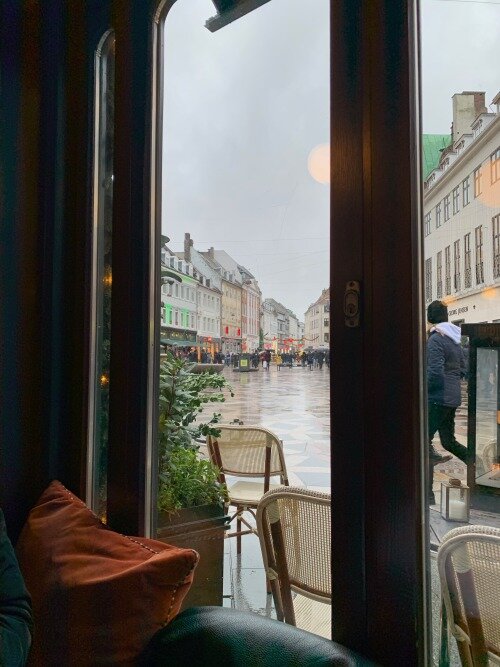
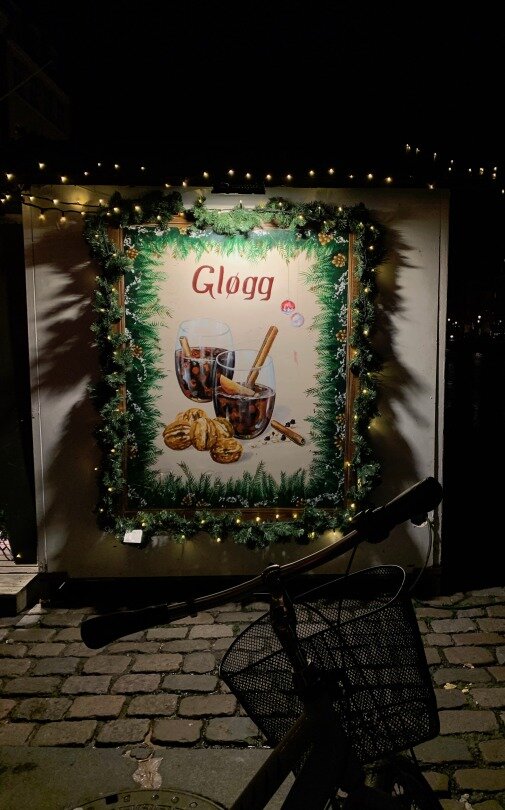
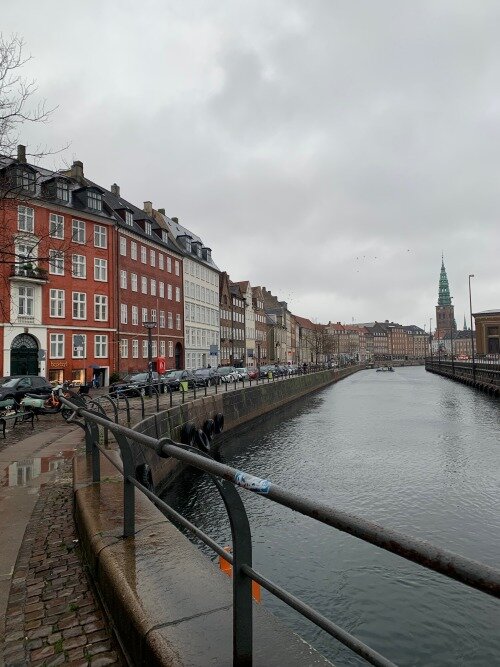
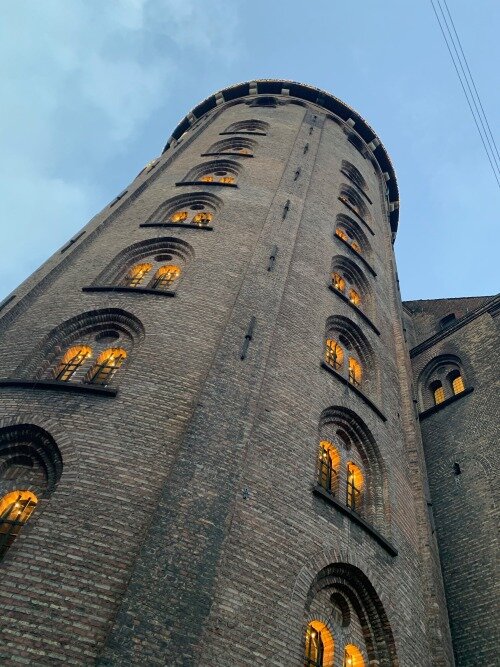
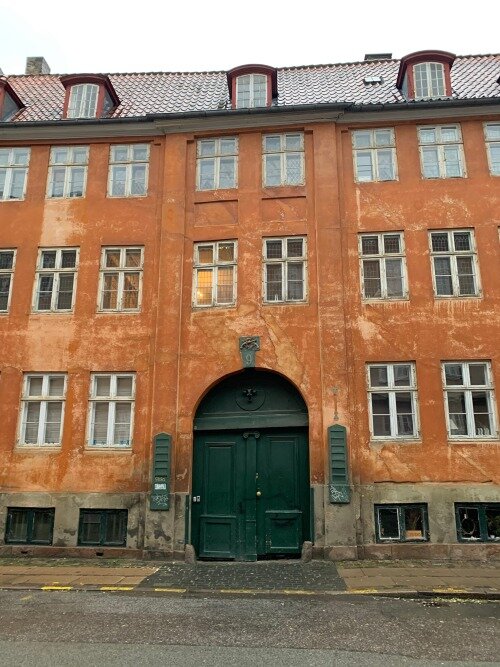
Finding Comfort in Copenhagen, via Your Stomach:
Test your tastebuds at Amass, the sustainable kitchen of former Noma chef Matt Orlando, who has created an inventive tasting menus entirely from ingredients grown in the on-site garden. From the onion powder to the fig-sugar-soaked apples, each component of every exquisite dish is farm-to-table fresh, and absolutely brilliant to taste.
Stroll through the city centre and find yourself in the beautiful Cafe Norden, where you can work your way through a massive brunch, sip a warm drink (try the white glögg, Danish mulled wine) and people watch from a cosy seat in the window.
Wake up with coffee and a cinnamon-laced pastry from one of the multiple Lagkagehuset bakery locations throughout the city.
Finish off the day with dinner at Madklubben, a cute spot in Copenhagen’s meatpacking district with a small but delicious menu, perfectly dimmed lighting, and very Danish waitering staff.
Voted Copenhagen’s best brunch, visit Møller Kafe & Køkken for a cup or two of excellent coffee and tapas-style brunch. Good luck not ordering everything on the menu – or do, and stay a while.
Left: A Copenhagen Instagram Diary.
Share your thoughts on this post: Facebook | Twitter | Linkedin | Pinterest


